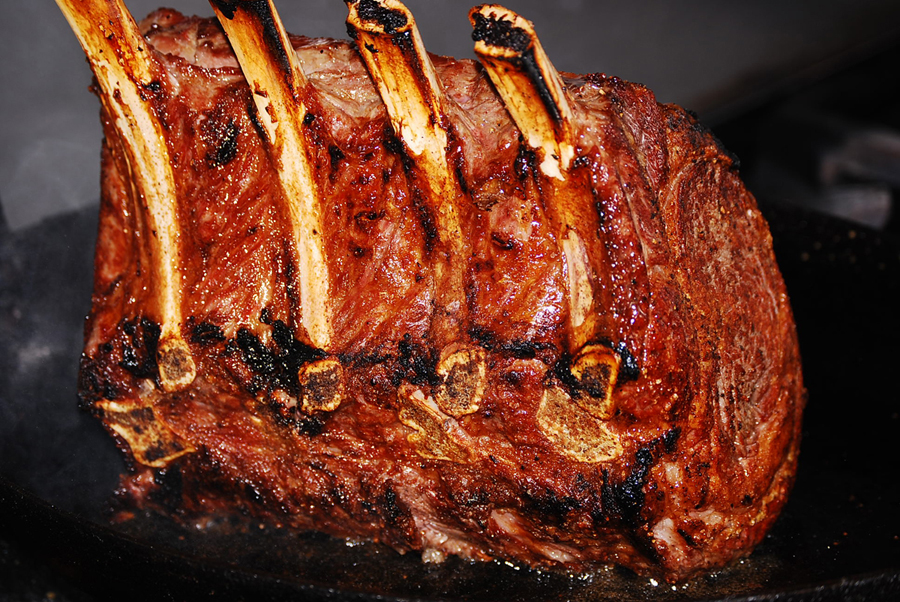Sorry if I offend any vegans but UMMM, I cannot wait for the prime cuts of beef to show up in Panama with the lifting of the high duty that was once charged. While regular cuts still will have a 30% duty, the better cuts will drop to 0%.
The U.S.-Panama Trade Agreement took effect Oct. 31, further enhancing market access for U.S. beef in Central America. The agreement grants immediate, duty-free access for high-quality (Choice and Prime) beef cuts. All other beef muscle cuts are subject to a 30% duty, but this rate will be phased down to zero over the next 15 years. For beef variety meat, Panama’s 15% duty fell to zero immediately for some items, while the duty rate for others will be phased down to zero over the next five years.
The U.S. Meat Export Federation (USMEF) projects these market-access improvements will help boost beef exports to Panama to about $8.5 million in 2013, which is a sizeable increase. Exports to Panama totaled $5.2 million in 2011, but should easily surpass that figure in 2012. Even with pre-FTA duty rates in effect, exports had already reached $4.9 million through the end of September and should finish the year near $7 million. This makes Panama the 33rd largest market for U.S. beef in terms of value. At 1.33 million lbs., it is the 39th largest volume destination.
“We were ready to hit the ground running in Panama, thanks to behind-the-scenes groundwork done in anticipation of the trade agreement,” explains Gerardo Rodriguez, USMEF director of trade development for Central America and the Dominican Republic. “This included early identification of potential marketing opportunities and beneficial partnerships with importers and retailers. USMEF has been working on the educational aspects of our marketing strategy for some time in Panama, so that when the FTA took effect we could fully capitalize on this opportunity.”
In July 2011, USMEF chose Panama City as the venue for its first major product showcase in Central America. The two-day program attracted more than 75 buyers from Panama, Guatemala, Belize, El Salvador, Costa Rica, Nicaragua, Honduras, Columbia, Chile, Peru and the Dominican Republic, introducing them to high-quality U.S. meat products. The turnout of U.S. exporters was also outstanding, as they sought to gain an early foothold in a market where trade barriers would soon be lowered.
“Our main goals of the product showcase were to give USMEF members a chance to see the market firsthand, allow them to meet face-to-face with importers and educate them about the rapidly growing opportunities in the region,” Rodriguez says.
A Closer Look: Central/South America Targets Of Beef Export Growth
Rodriguez notes that U.S. beef exports have been achieving success in Central America for some time thanks to CAFTA-DR, the Dominican Republic/Central America Free Trade Agreement that was implemented several years ago (Panama was the only Central American country not included in CAFTA-DR). He says CAFTA-DR has been especially beneficial in developing a strong market in Guatemala, which is now a Top 20 destination for U.S. beef in terms of both volume and value. Through September, beef exports to Guatemala had reached 6.6 million lbs., valued at $15.1 million. This is an increase of 27% in volume and 38% in value over the record pace of 2011.
USMEF works with some Guatemalan importers who have branch operations in El Salvador, and they are now helping expand the presence of U.S. beef there as well. This year’s exports (through September) to El Salvador are up 11% in volume (227,076 lbs.) and 42% in value ($1.1 million) compared to last year.
In Honduras, exports are 8% higher in volume (1.56 million lbs.) compared to a year ago, and have surged 46% in value to $3.1 million. Another promising market is Costa Rica, where volume is down slightly but export value has increased 16% to nearly $3 million.
“With duty rates being ratcheted down and other trade barriers also lowered, CAFTA-DR has really opened new doors for U.S. beef in Central America,” Rodriguez says. “That experience is one of the reasons we are so excited about the Panama FTA.”
